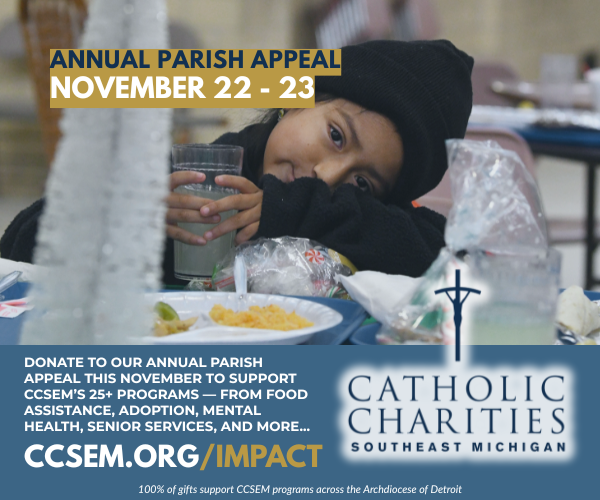OKLAHOMA CITY (OSV News) -- A funeral Mass was celebrated at the Blessed Stanley Rother Shrine in Oklahoma City Sept. 24 for retired Archbishop Eusebius J. Beltran, followed by interment at Resurrection Cemetery. He died Sept. 12 at age 91.
The late archbishop shepherded the Archdiocese of Oklahoma City from 1993 until his retirement in 2010. When he reached 75 on Aug. 31, 2009, he submitted his resignation to the pope as required by canon law. It was accepted by Pope Benedict XVI a year later, and his retirement became effective on Dec. 16, 2010.
He served as the second bishop of the Diocese of Tulsa, Oklahoma, for 15 years before he was named to Oklahoma City.
"Archbishop Beltran was indeed a good shepherd," said Archbishop Paul S. Coakley, who succeeded the late prelate as Oklahoma City's archbishop. "His accomplishments are numerous to be sure."
"Here in the archdiocese, one of the things I think Archbishop Beltran would have been most proud of and most dearly remembered for was the development of our beautiful camp -- Our Lady of Guadalupe Catholic Camp -- to serve young people from around the archdiocese," Archbishop Coakley said in a statement issued upon the death of his predecessor. "Young people were always a very important part of his ministry as bishop and as a priest. That’s part of his lasting legacy in the Archdiocese of Oklahoma City and beyond."
"We thank God for Archbishop Beltran and the many ways in which he served faithfully and tirelessly," Archbishop Coakley added. "A commitment to Catholic schools. A commitment to Catholic Charities and working with the poor. He was a great friend to all and I know he will be sorely missed. He touched many lives and many hearts."
Besides the thriving Our Lady of Guadalupe Catholic Camp, which opened in 2000, Archbishop Beltran developed many programs for the archdiocese during his 18-year tenure.
Perhaps one of his greatest achievements began in 2007 when he was granted permission to open a sainthood cause for Father Stanley Rother, a priest of the archdiocese who was murdered in 1981 in Guatemala while on mission. After three years of research and interviews, more than 7,000 documents were sent to the Congregation (now Dicastery) for the Causes of Saints in Rome.
On Dec. 1, 2016, Pope Francis officially recognized Father Rother as a martyr for the faith. He is the first recognized martyr from the United States and the first U.S.-born priest to be beatified.
Archbishop Beltran concelebrated Blessed Stanley Rother's beatification Mass in Oklahoma City on Sept. 23, 2017, in downtown Oklahoma City -- an event attended by more than 20,000 people from around the world.
"His saintly life has become well known beyond the boundaries of Oklahoma and Guatemala and the faith of those familiar with his life has been greatly strengthened. How grateful we are to almighty God this day for the beatification of Father Rother," Archbishop Beltran said in remarks at the Mass.
Ground was broken for the Blessed Stanley Rother Shrine in south Oklahoma City in 2019, and it was dedicated in 2023. A small chapel in the shrine is the permanent resting place of the body of Father Rother.
The fifth of nine children, Eusebius Joseph Beltran was born in Ashley, Pennsylvania, on Aug. 31, 1934, into a devout Catholic family. Two Beltran sons became priests, Joseph in 1955 and Eusebius in 1960, both for the Archdiocese of Atlanta, while a daughter, Sponsa, joined a Franciscan community, serving children at a mission in Liberia.
After studies at St. Charles Seminary in Overbrook, Pennsylvania, Eusebius Beltran was ordained a priest on May 14, 1960. Following his ordination, he was immediately chosen to work part-time in the chancery, and in 1963 he was named vice chancellor and the presiding judge of the Metropolitan Tribunal of the Archdiocese of Atlanta.
He accompanied Archbishop Paul J. Hallinan of Atlanta to the sessions of the Second Vatican Council as a "peritus," or adviser.
From 1971 to 1978, he was the vicar general for the Archdiocese of Atlanta. In addition to his duties as vicar general, he served as a pastor. His first assignments as pastor were a parish in Rome, Georgia, and then a parish in the Atlanta suburbs; however, he gave up this assignment to take responsibility for an urban parish serving Black Catholics.
In 1978, he was appointed to lead the Tulsa Diocese and ordained bishop at Holy Family Cathedral in Tulsa on April 20, 1978. During his nearly 15 years in Tulsa, he became known for his concern for Catholic Charities, for Catholic schools and for vocations to the priesthood. In each of these areas, he is credited with developing innovative programs and extending the church’s reach throughout Eastern Oklahoma.
On Nov. 24, 1992, it was announced that he had been appointed to succeed Archbishop Charles A. Salatka as Oklahoma City’s third archbishop. His installation took place on Jan. 22, 1993. According to the archdiocese, the ceremony was held in Oklahoma City's Civic Center Music Hall because the Cathedral of Our Lady of Perpetual Help could not hold all those expected to attend. He later received the pallium, the sign of an archbishop’s office, from St. John Paul II on June 29, 1993, the feast day of Sts. Peter and Paul, in St. Peter's Basilica.
Archbishop Beltran was a long-time member of the Knights of the Holy Sepulchre and the Knights of Columbus. He served as a member of the board of directors of St. Gregory’s University. He served on a number of the U.S. Conference of Catholic Bishops' committees, including the liturgy committee and Latin America committee. He was on the board of the National Conference of Christians and Jews and served on various local boards, organizations and committees.










